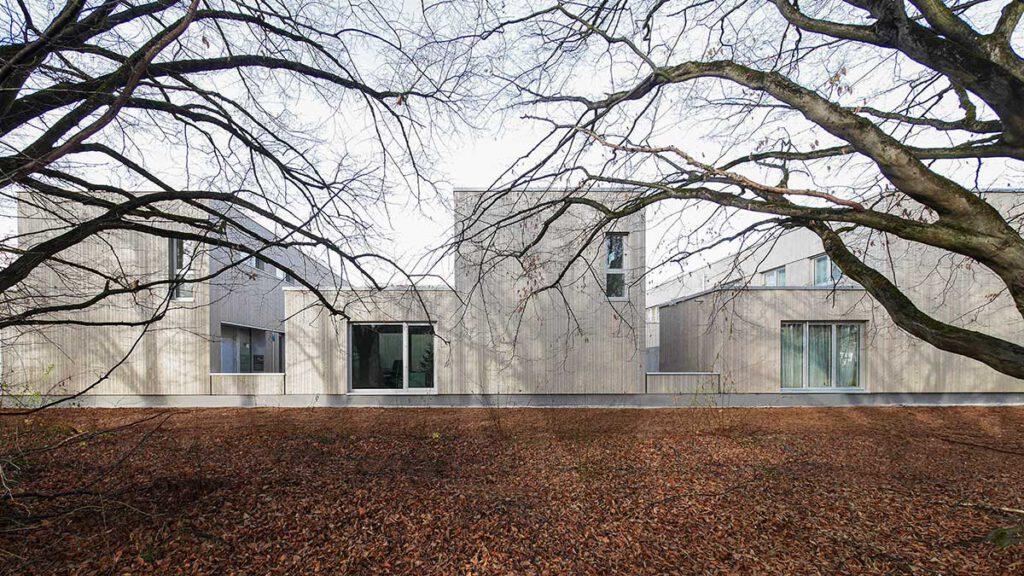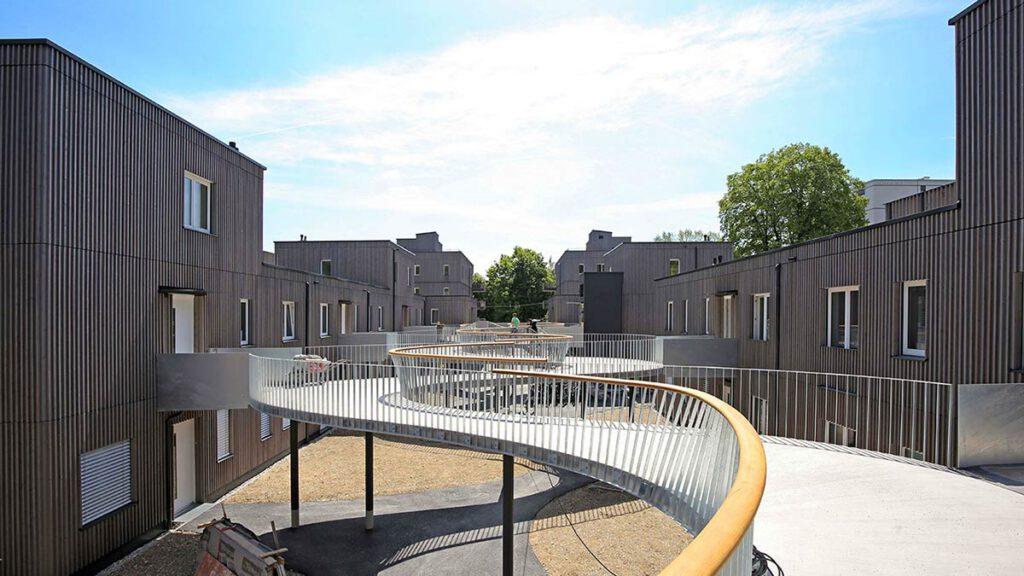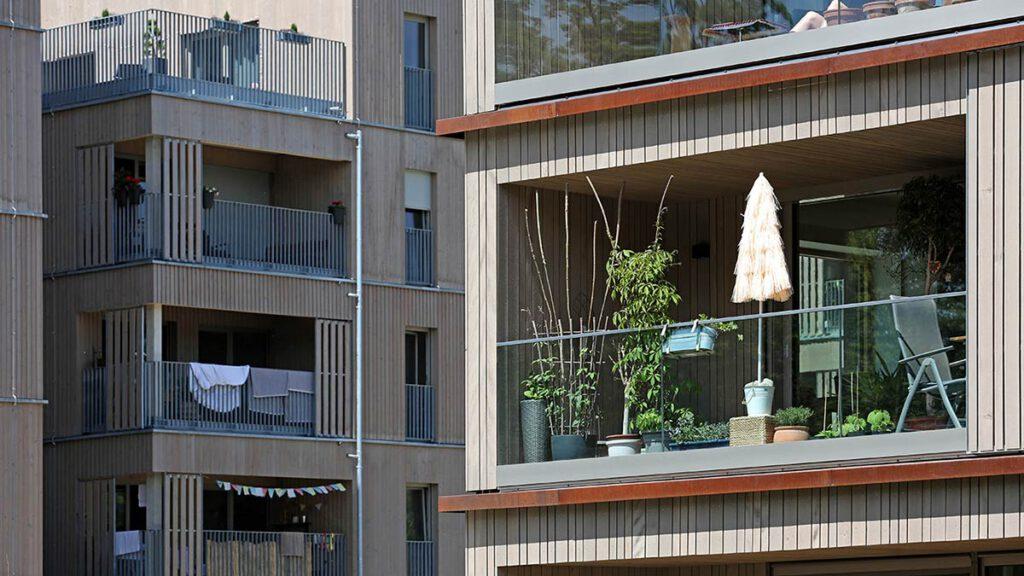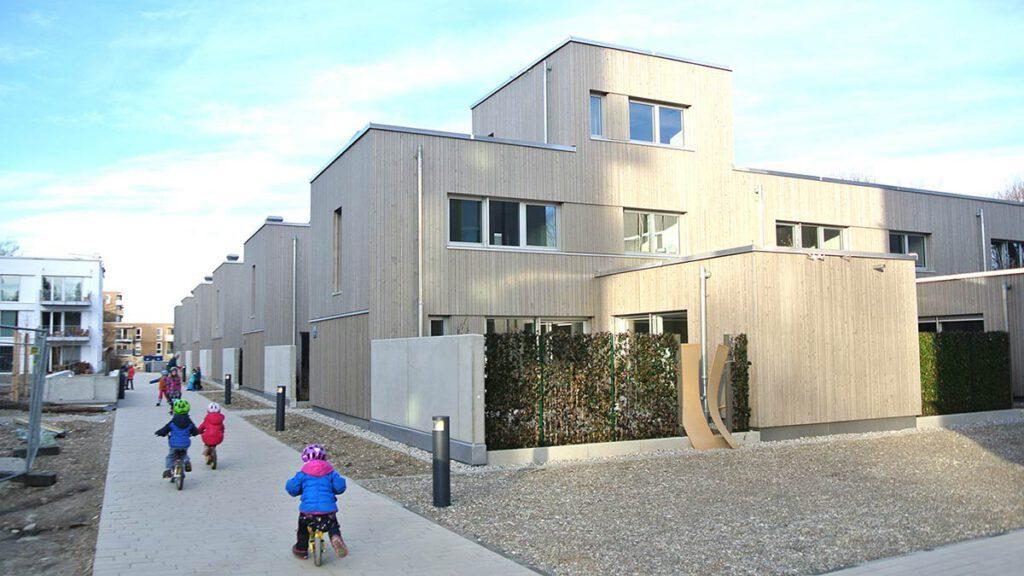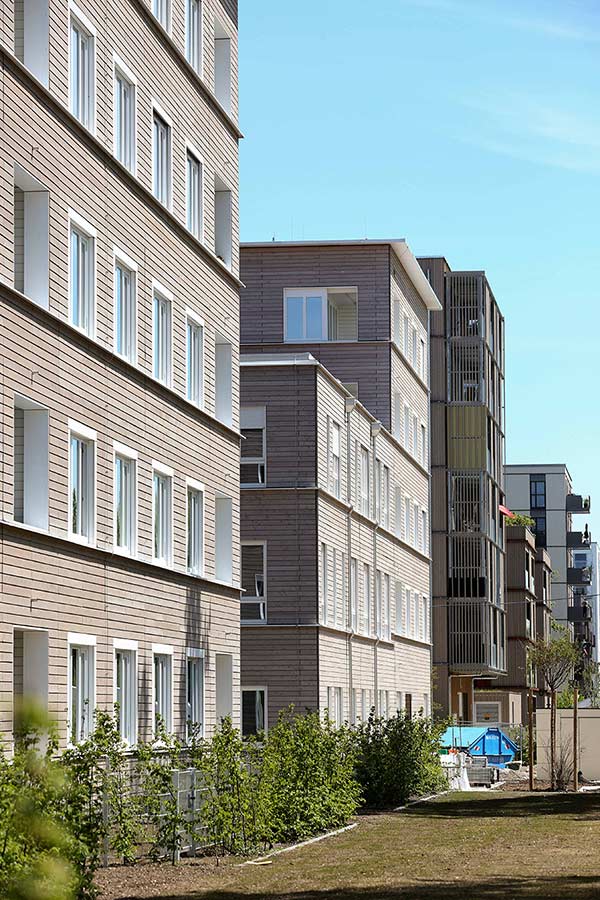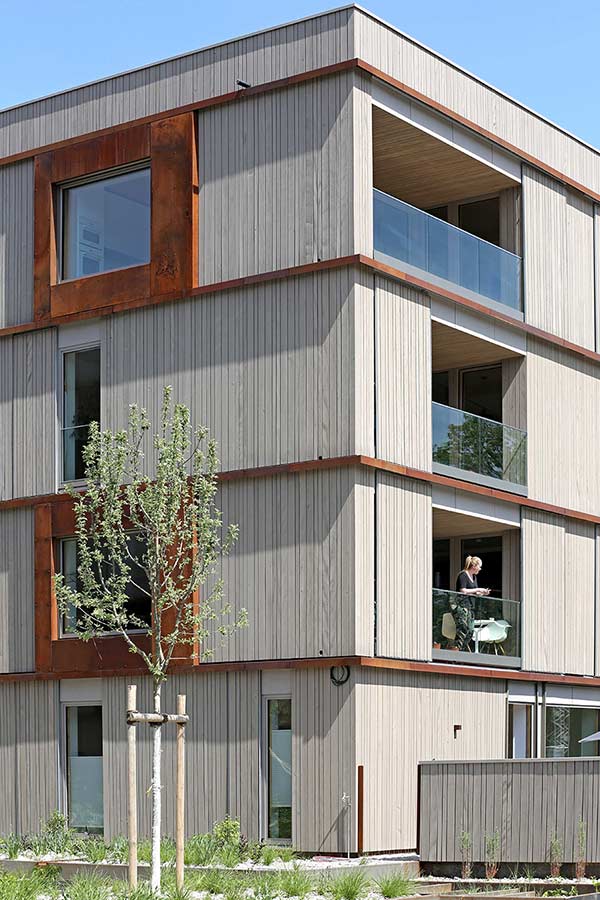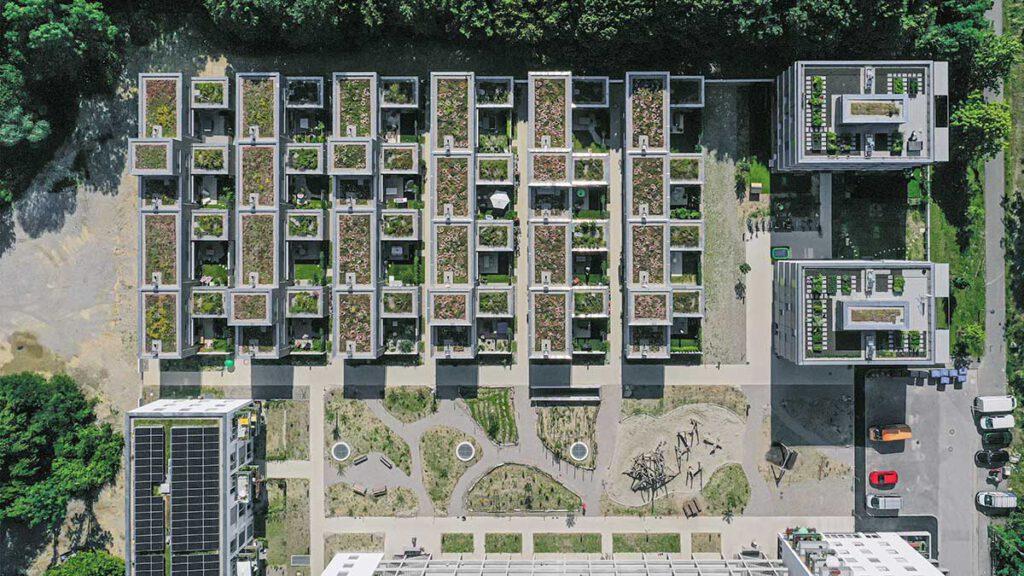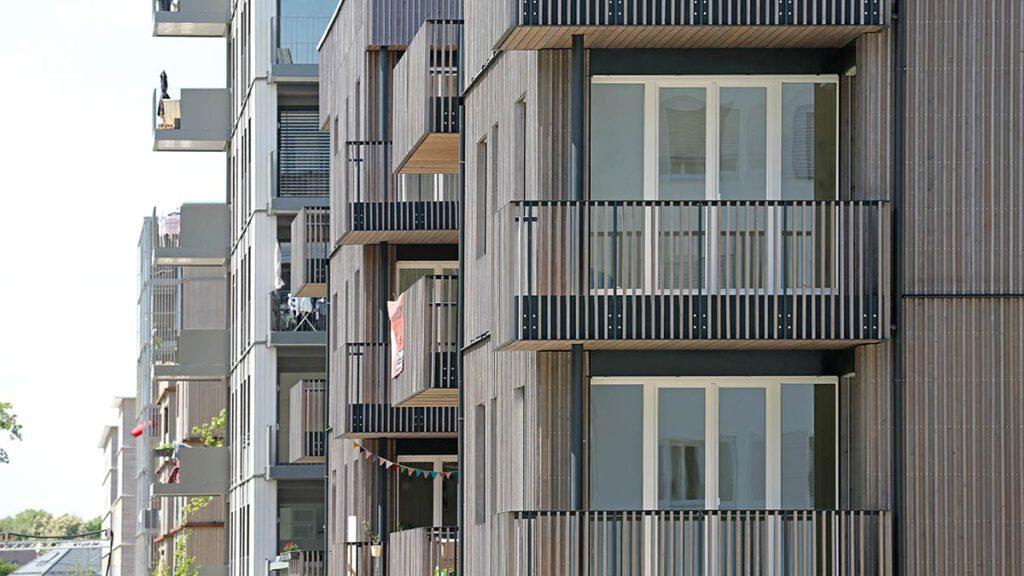A district made of wood
Munich’s Prinz-Eugen-Park is the site of the largest integrated timber settlement in Germany. And that’s not all – the city planners have even more in the pipeline.
Between the rows of houses, a walkway meanders from one top-storey apartment to the next at a height of three metres (10 ft). At one point, the railings open up to make way for a slide that shoots down into the sandpit below. It is a winning blend of functionality and childhood dreams. The WA 15 East owner-occupied apartments in Prinz-Eugen-Park are part of Munich’s ecological model settlement, where city kids get to grow up in timber houses.
Easy on the eye and the environment
The two- and three-storey terraced houses are covered with vertical wooden battens. The ever-changing cubages create an interesting typology that has little in common with the monocultural design of conventional terraced houses. These residential units were designed in a timber hybrid style by agmm Architekten + Stadtplaner together with Hable Architekten.
Just under 570 new apartments have been built in the timber settlement, for the most part publicly and privately funded rented flats. These have been assigned to eight individual timber construction projects that vary not only in design but also in height, style and energy standard. Everything is included here, from diverse timber hybrid forms to all-wood construction. The buildings are up to seven storeys high, the bulk of them complying with low-energy standard KfW 55 and in some cases even the Passive House standard.
Timber construction research
The reason for this wide cross-section is that Munich plans to establish itself as a modern timber city and is also using this sustainable pilot project for its own research purposes. With its variety of building types, the model eco settlement is designed to provide best practice examples for future projects.
Ecological assessments were conducted for all model settlement buildings to corroborate the importance of timber construction for climate protection and sustainable urban development.
Ulrike Klar, Head of Munich’s Urban Planning and Building Regulations Department
“Ecological assessments were conducted for all model settlement buildings to corroborate the importance of timber construction for climate protection and sustainable urban development”, explains Ulrike Klar, Head of Munich’s Urban Planning and Building Regulations Department. This involved examining the entire life cycle of the buildings with regard to resource protection and climate protection impact:
“The most important parameters of this assessment include the mass of timber construction materials, the primary energy consumption and the amount of carbon stored by the timber materials. In the model settlement, at least 12,500 tonnes of CO₂ are stored in the long term.”
Flexibility in wooden frame construction
On the south-east border of the timber construction model settlement, there are 24 single-family houses and two four-storey point-blocks designed by local architecture and urban planning firm Dressler Mayerhofer Rössler. With two or three storeys and pre-greyed timber façades, these single-family houses have their own private patios and come in a variety of floor plans and building shapes. It is yet further proof that top-quality architecture and construction efficiency are perfectly compatible.
Both the four-storey apartment buildings and the terraced houses have wooden frame constructions. This permits maximum flexibility with regard to both the floor plan and the various preferences of future users. As with all buildings in the model settlement, the property developers undertook at the outset to use a large proportion of construction materials from renewable sources.
Subsidies by the kilogram
As an incentive for making the approx. 570 apartments as sustainable as possible, the city introduced its own currency – “Nawaros” (short for “nachwachsende Rohstoffe”, i.e. renewable raw materials) – for calculating the subsidies for each project. Multi-storey buildings received a subsidy of up to two euros per kilogram of “Nawaro”. In some buildings, more than 250 kilograms of timber are used per square metre.
In the model settlement, at least 12,500 tonnes of CO₂ are stored in the long term.
Ulrike Klar, Head of Munich’s Urban Planning and Building Regulations Department
According to the Head of Munich’s Urban Planning and Building Regulations Department, multi-storey timber apartments currently still cost between 5% and 25% more to build than conventional solid construction. Ulrike Klar: “However, this can change once serial construction increases, more apartments are being built, and demand goes up.”
A worthwhile investment
For residents, this is a wise investment. Apart from the cosy indoor climate, timber buildings use far less energy thanks to their high energy standards. Citing a survey of residents in the Munich model settlements, Ulrike Klar says: “Of course, residents are also eager to support sustainable and resource-friendly construction and, in turn, to make an active contribution towards climate protection.”
While the City of Berlin is aiming for its WoHo project to be the tallest timber high-rise in Germany, Munich’s ecological model settlement is the largest integrated timber settlement anywhere in the country. Here, the City of Munich is playing a pioneering role which, as Ulrike Klar reveals, is to be further stepped up over the next few years: “Following our experience with and positive feedback from the Prinz-Eugen-Park project, we are now developing four new timber construction projects.” And a new funding programme for multi-storey timber buildings is also in progress.
Text: Gertraud Gerst
Translation: Rosemary Bridger-Lippe
Photos: Ulf Rössler, Stefan Schott / Dressler Mayerhofer Rössler Architekten und Stadtplaner, Michael Nagy / LHM, Bavarian State Capital of Munich
